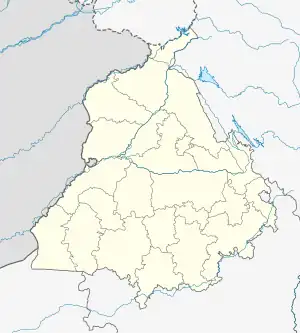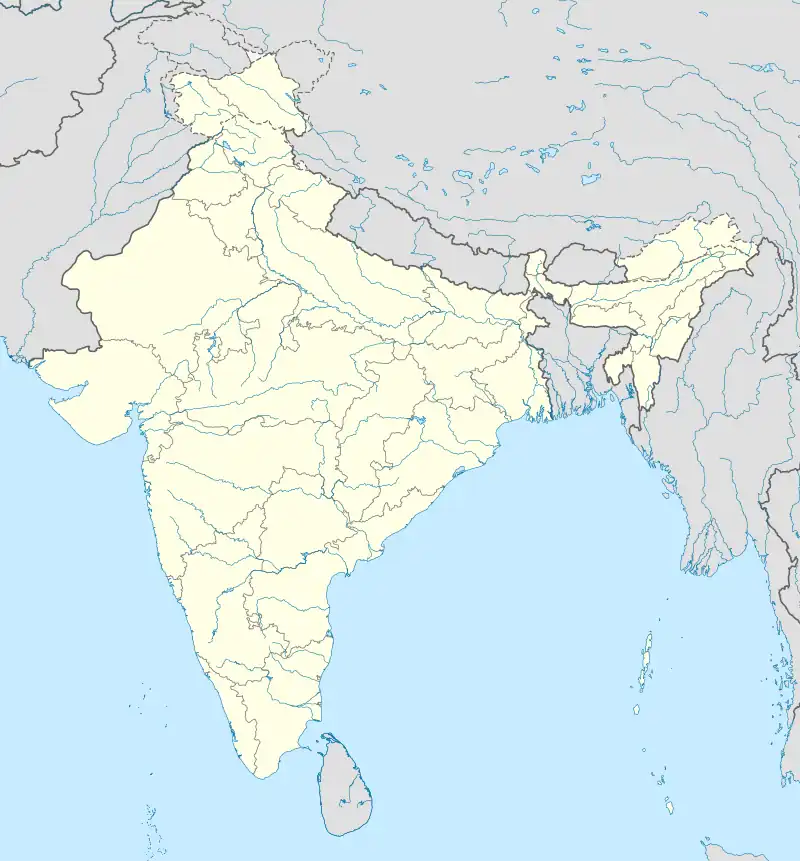Dhariwal, India
Dhariwal is a fifth largest town and a municipal council in Gurdaspur district in the state of Punjab, India. Dhariwal was most famous for its woolen mill. This town is situated on the banks of river Upper Bari Duba and is 13 km away from Gurdaspur on the Gurdaspur-Batala highway. Dhariwal,like rest of north-western India, features a humid subtropical climate. Average yearly precipitation is about 925mm (36.4 inches), 70% of it receives during monsoon season (June-September). Winter is also wet. June is the hottest while January is coldest month. In winter, dense fog persists for three to five days. As a result, day temperature drops to single digits. During May and June, dust storms followed by intense spells for short intervals are not uncommon. Monsoon arrives in the end of June and withdrawal starts around the third week of September. The town is prone to heatwaves during summer and chills during winter.
Dhariwal | |
|---|---|
Town | |
 Dhariwal Location in Punjab, India  Dhariwal Dhariwal (India) | |
| Coordinates: 31.95°N 75.32°E | |
| Country | |
| State | Punjab |
| District | Gurdaspur |
| Government | |
| • Type | Municipal corporation |
| • Body | Nagar Palika |
| Elevation | 253 m (830 ft) |
| Population (2001) | |
| • Total | 18,706 |
| Languages | |
| • Official | Punjabi |
| Time zone | UTC+5:30 (IST) |
Demographics
According to 2010 estimates, it had a population of 23,158 inhabitants.
As of 2001 India census,[1] Dhariwal had a population of 18,706. Males constitute 52% of the population and females 48%. Dhariwal has an average literacy rate of 74%, higher than the national average of 59.5%. Male literacy is 78% and female literacy is 70%. In Dhariwal, 10% of the population is under six years of age.
History
During British rule, the New Egerton Woolen Mills (established in 1880 then purchased by Sir Alexander MacRobert in 1884[2]) produced woolen worsted and hosiery of all kinds - in 1904 the company employed 908 people.[3] These mills were famous throughout colonial India[4] and were the only mills in Punjab at that time.[5]
See also
References
- "Census of India 2001: Data from the 2001 Census, including cities, villages and towns (Provisional)". Census Commission of India. Archived from the original on 16 June 2004. Retrieved 1 November 2008.
- Miller, Marion (2014), Cawnpore to Cromar, Librario, p. 28, ISBN 978-1-909238-09-1
- Gurdāspur District - Imperial Gazetteer of India, v. 12, p. 398.
- Gurdāspur Tahsīl - Imperial Gazetteer of India, v. 12, p. 401.
- Arts and Manufacture - Imperial Gazetteer of India, v. 20, p. 319. India